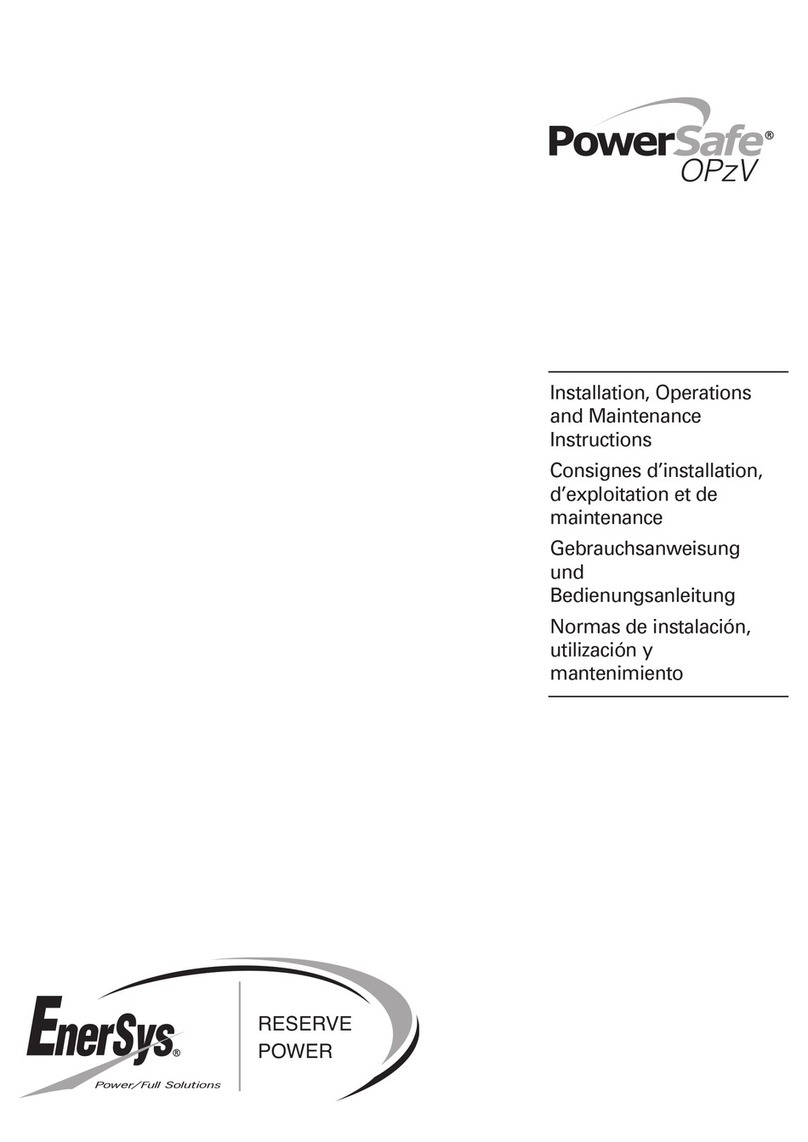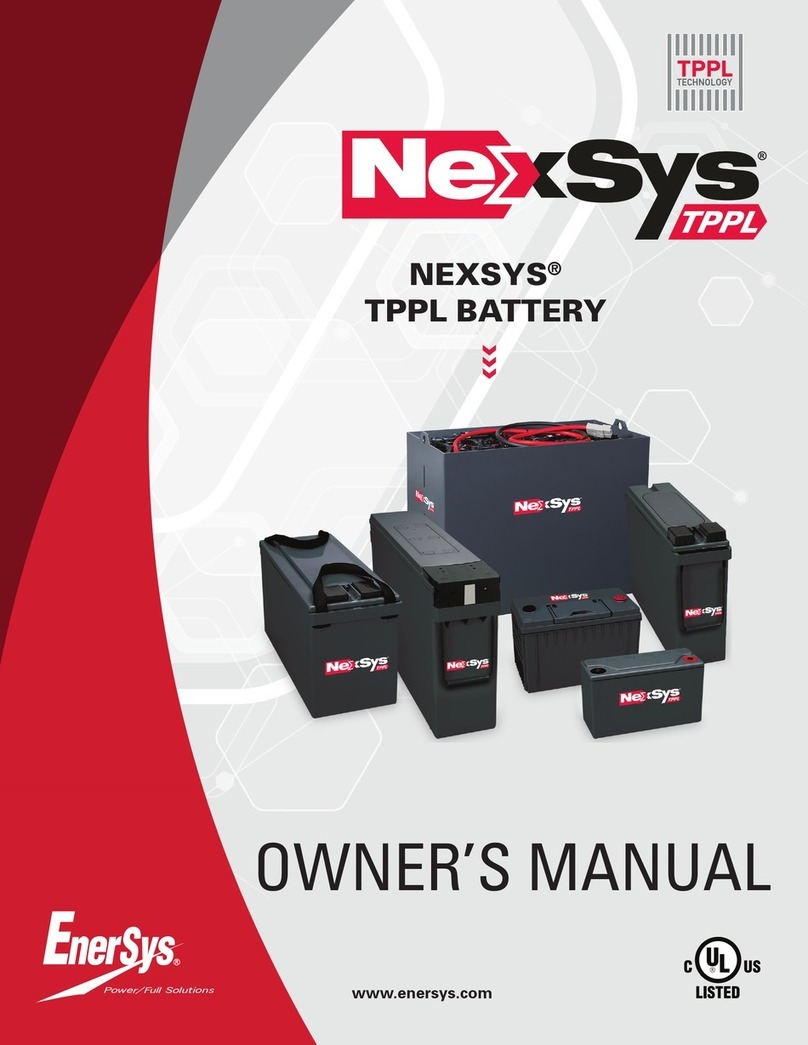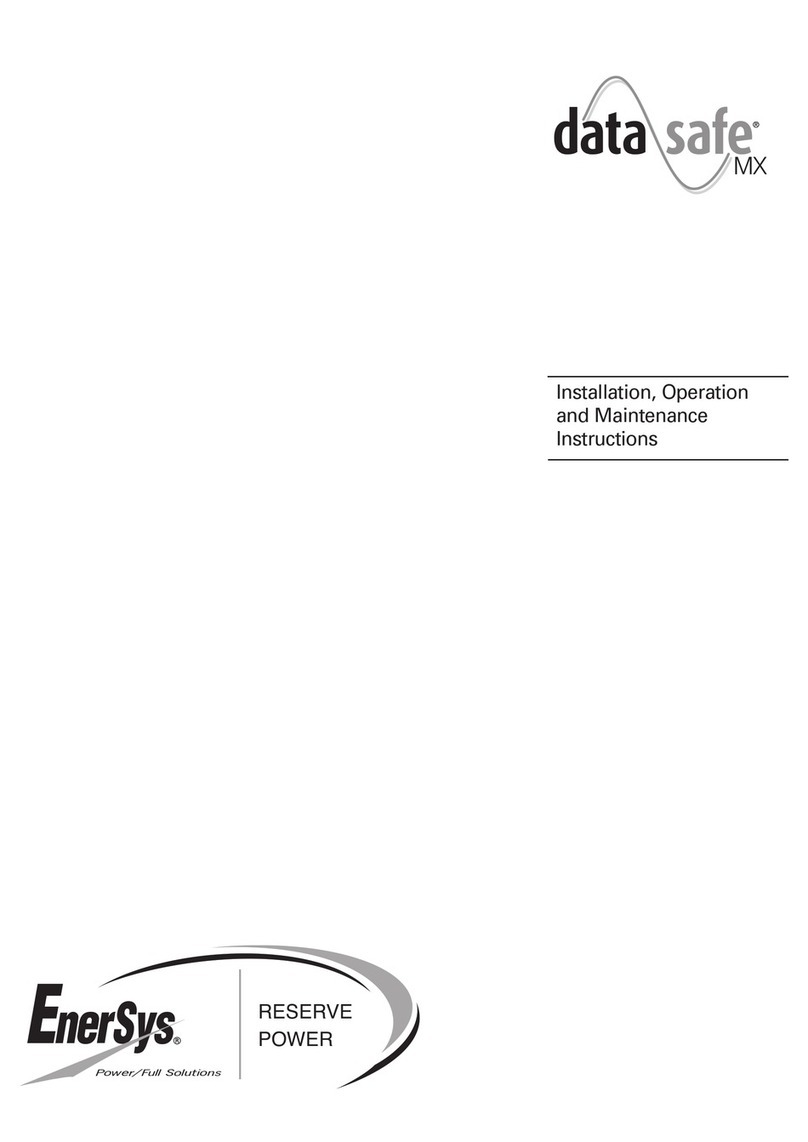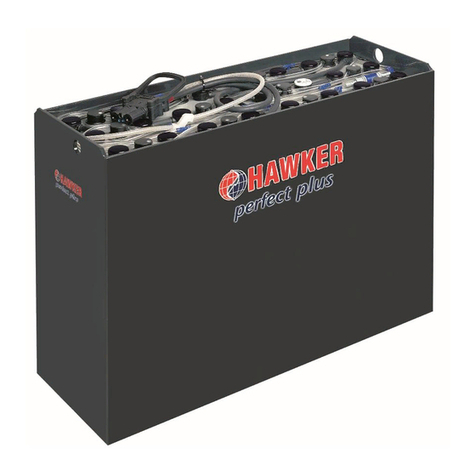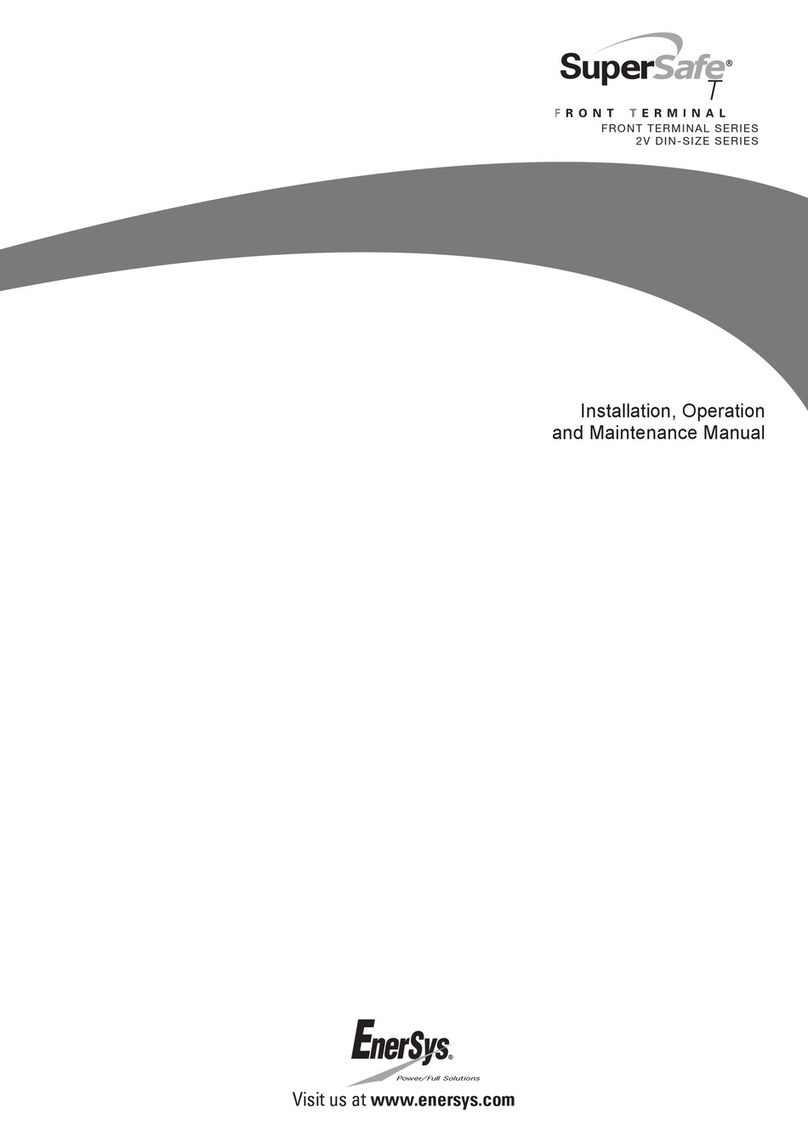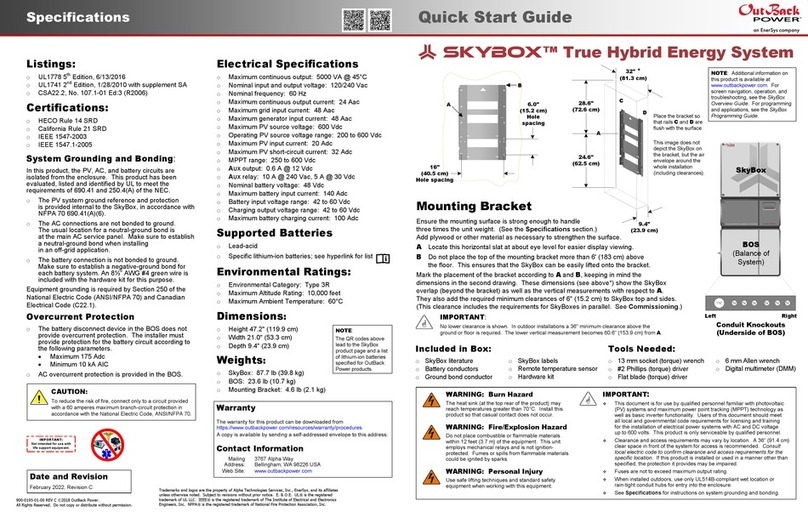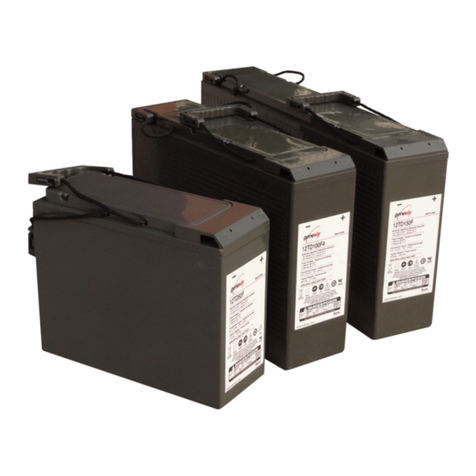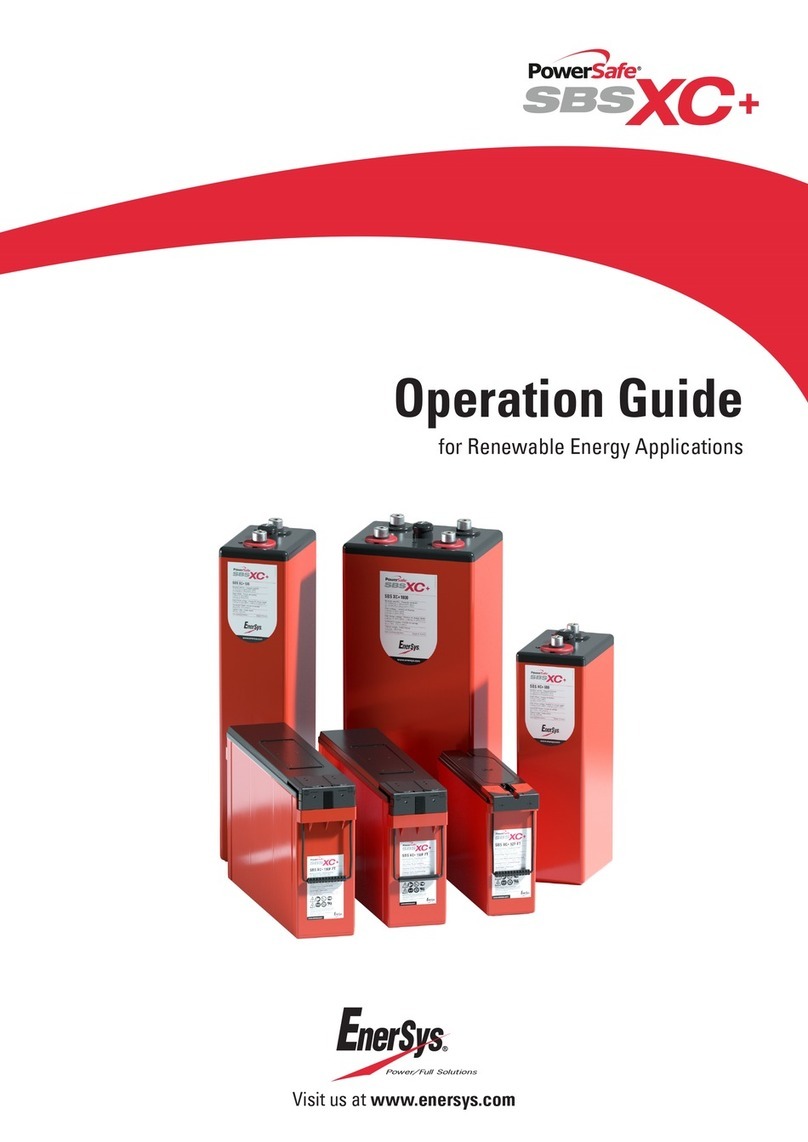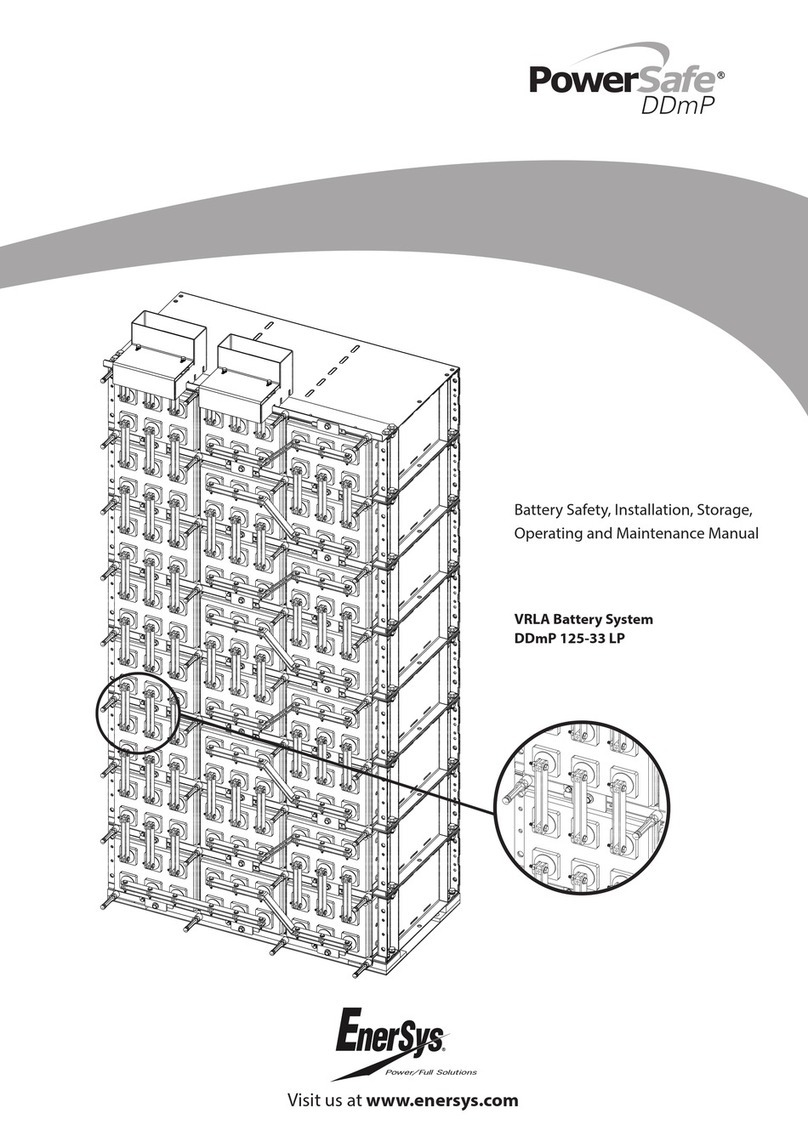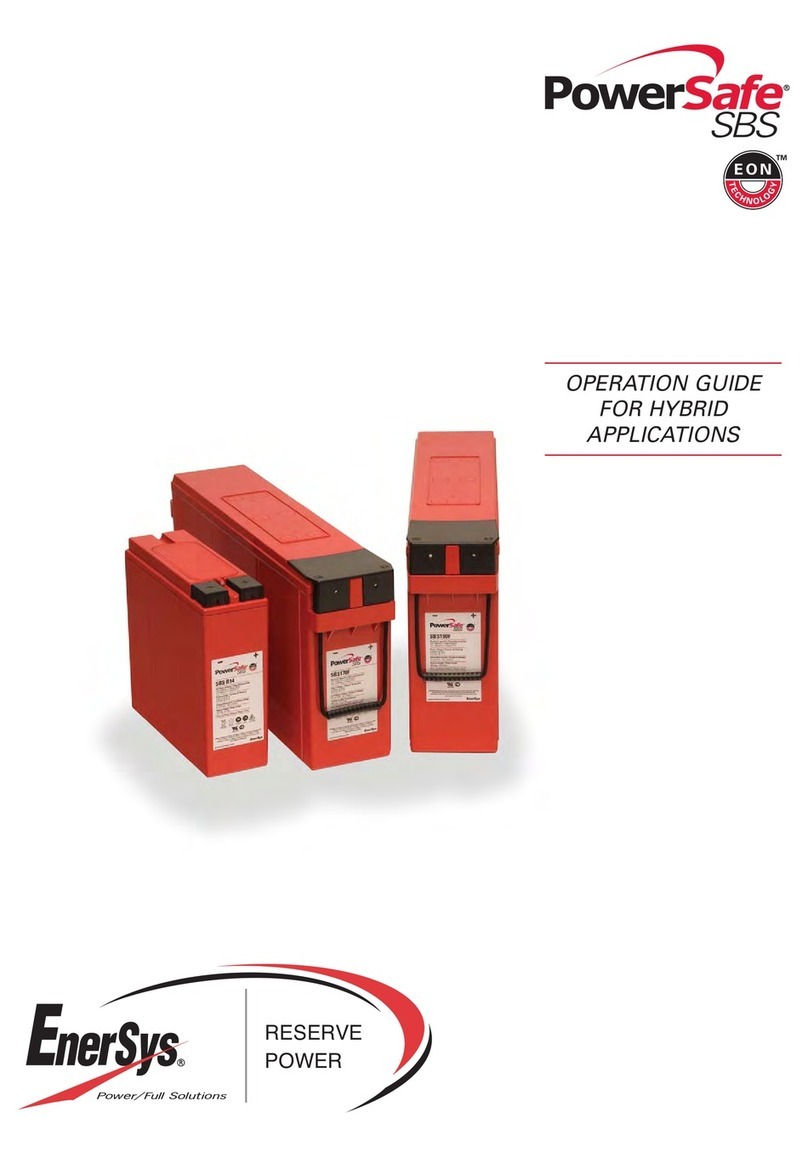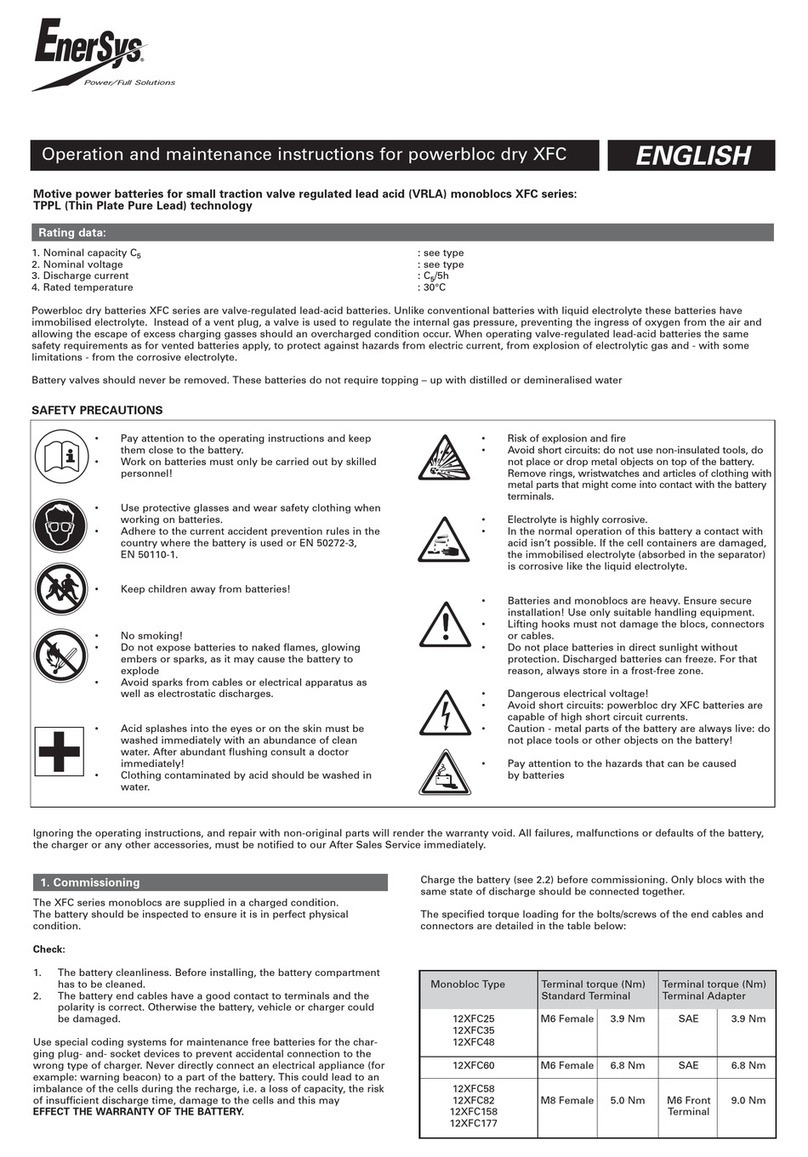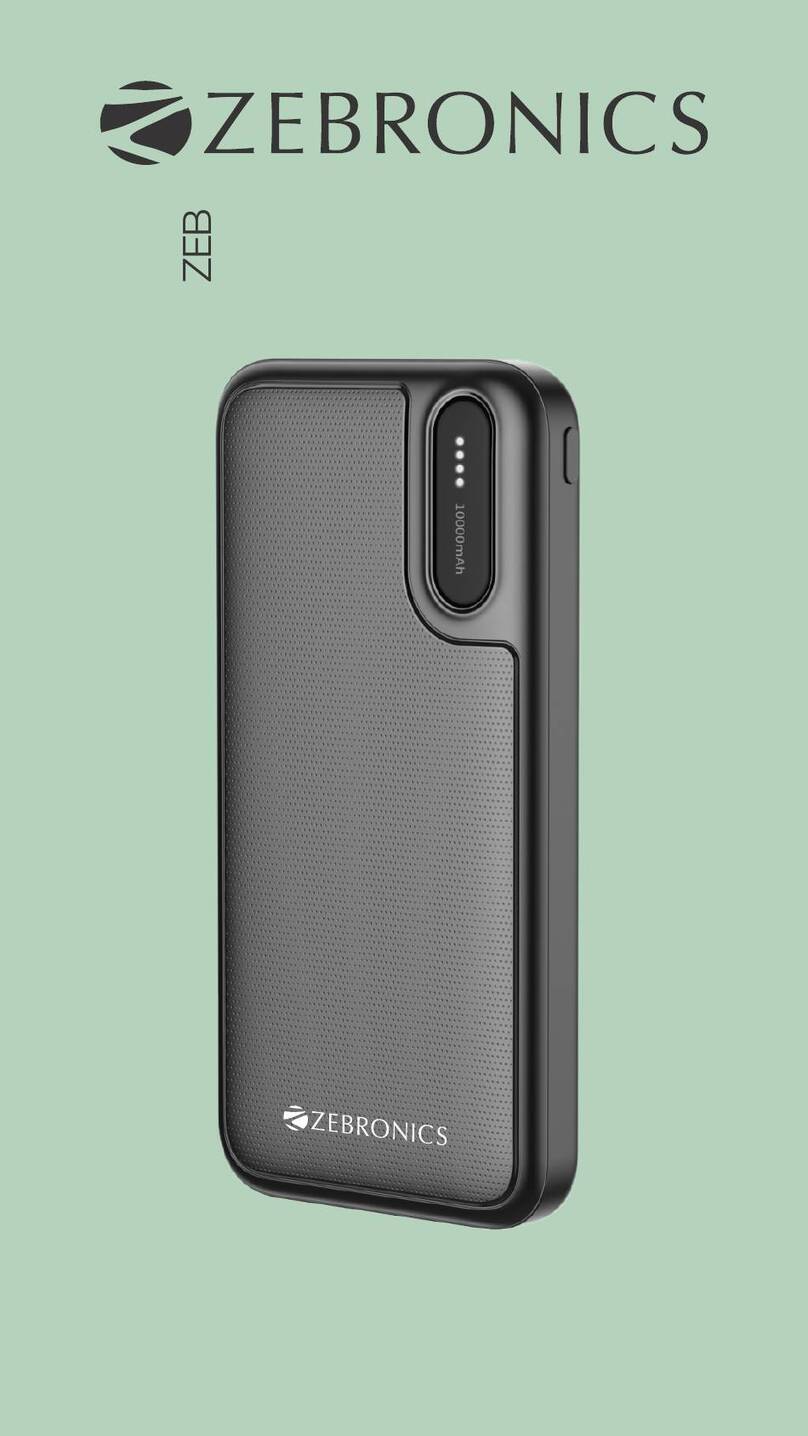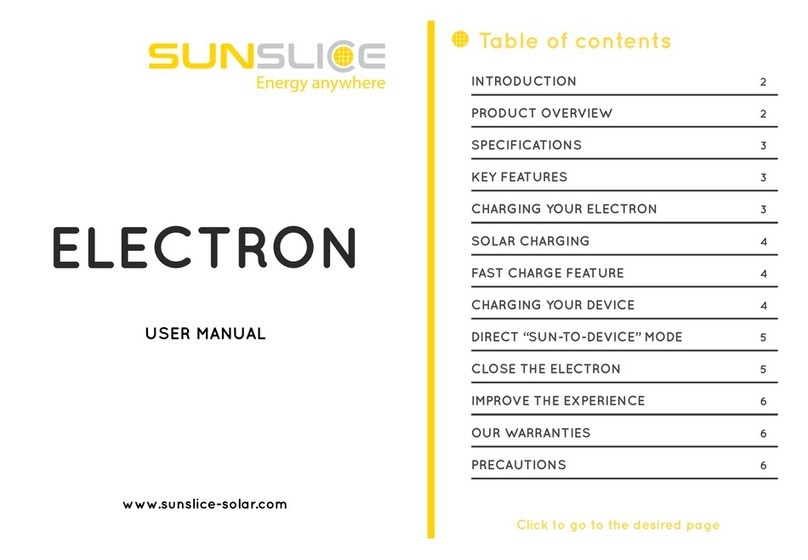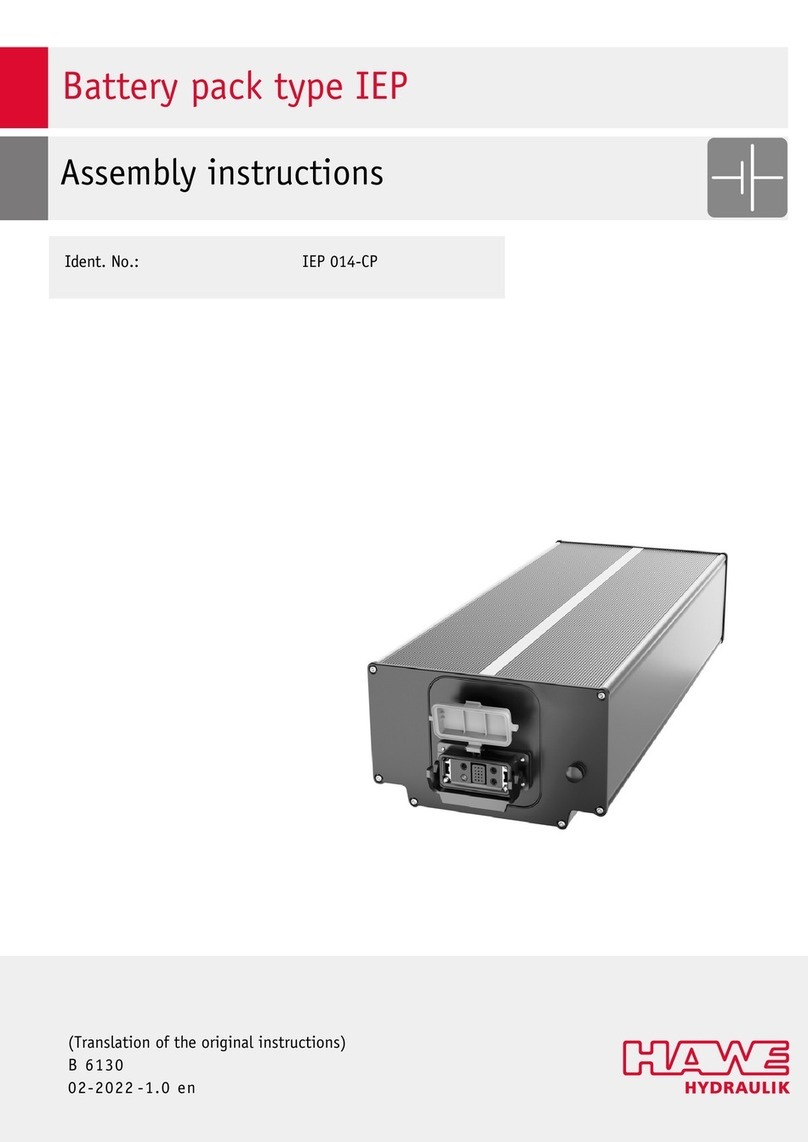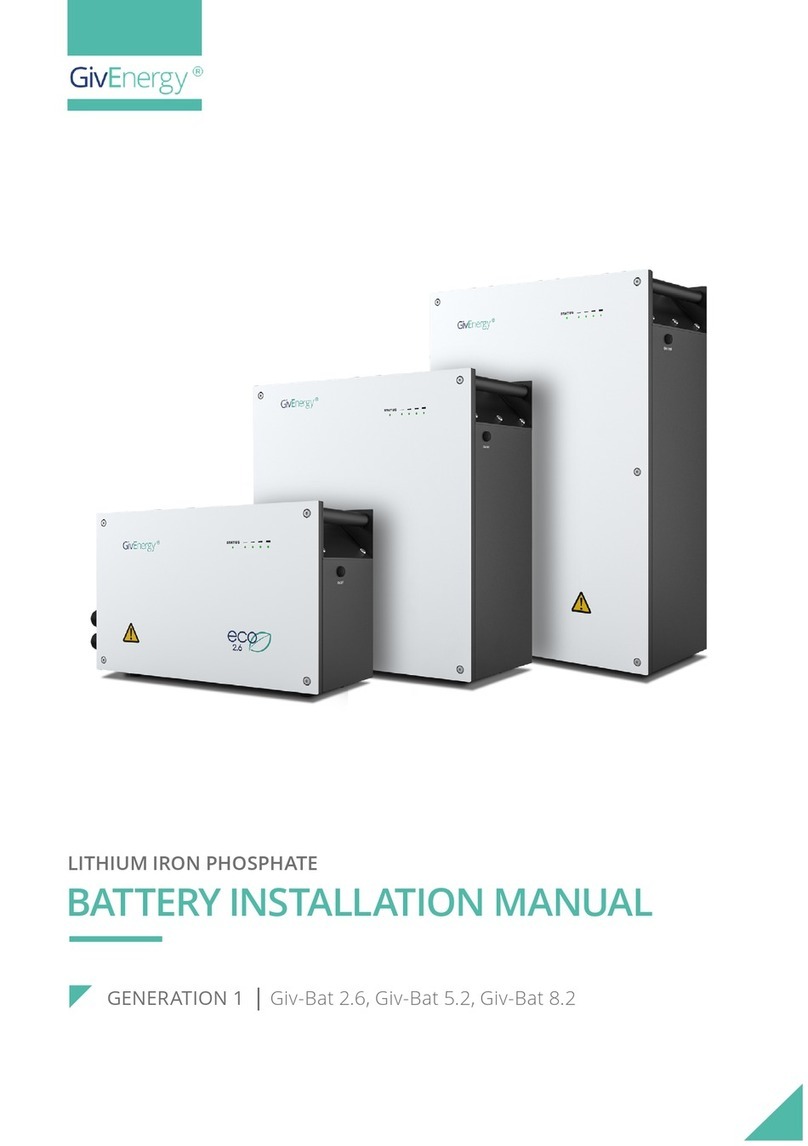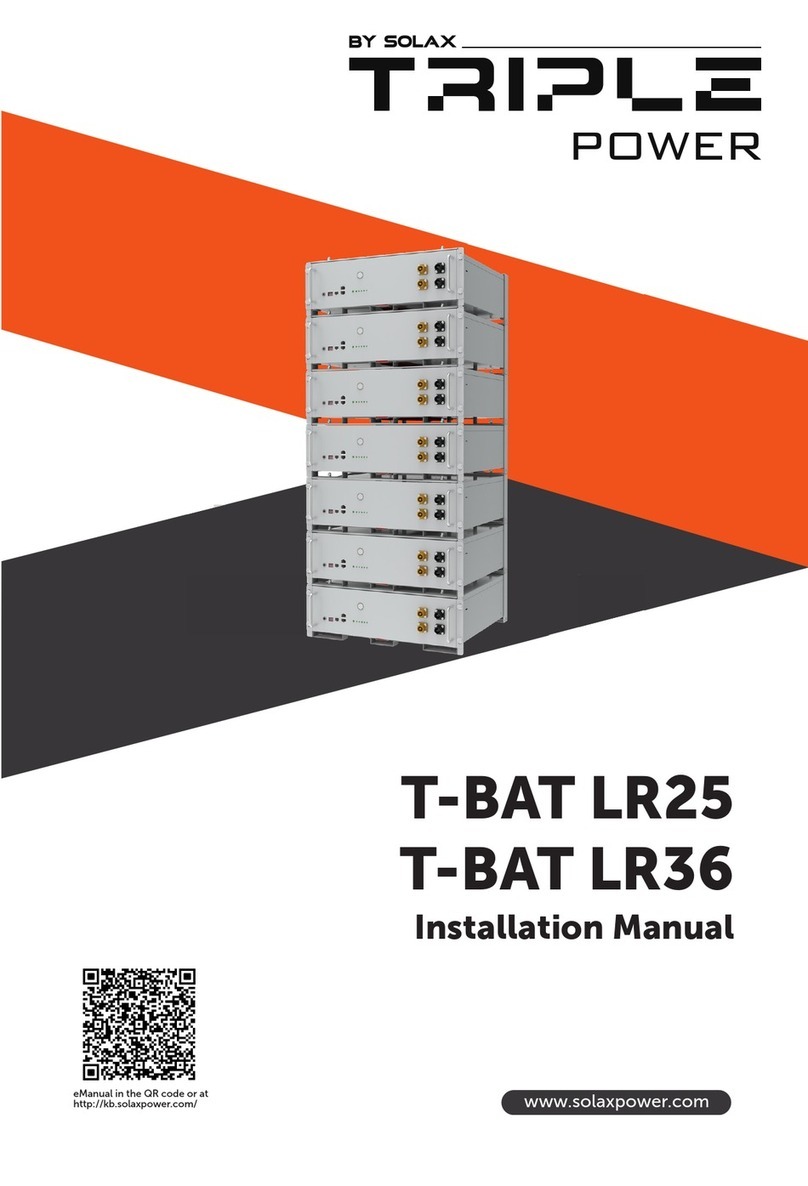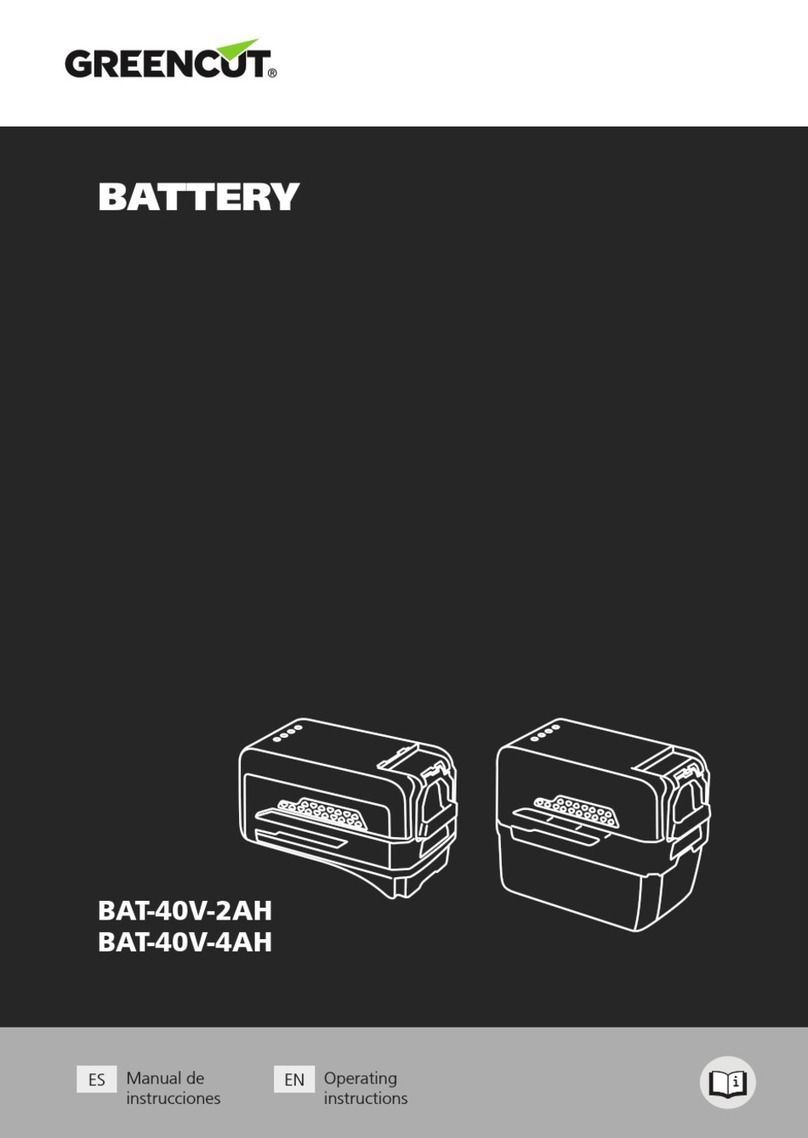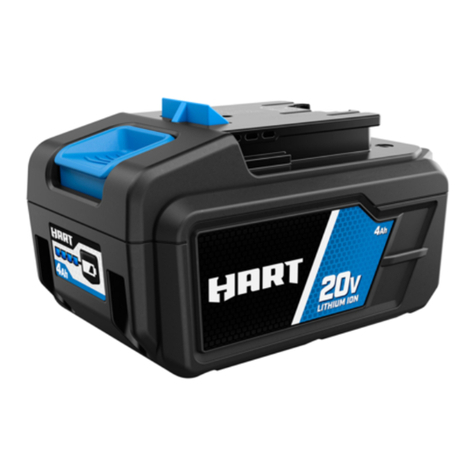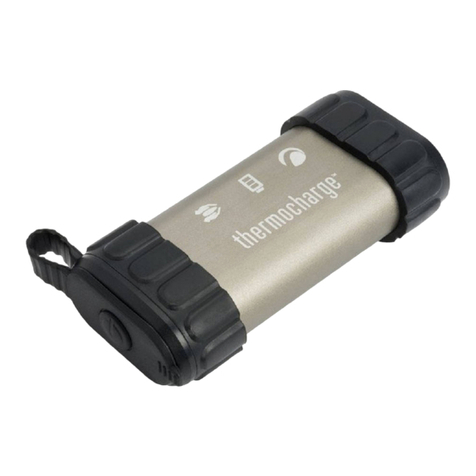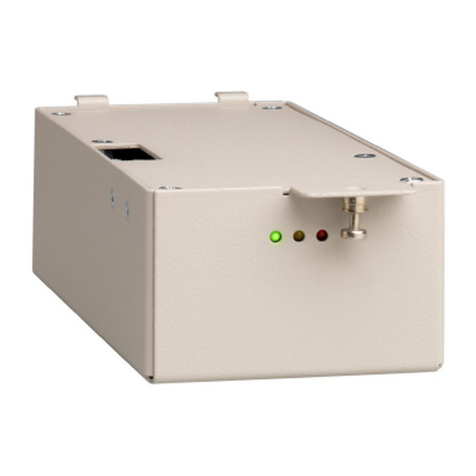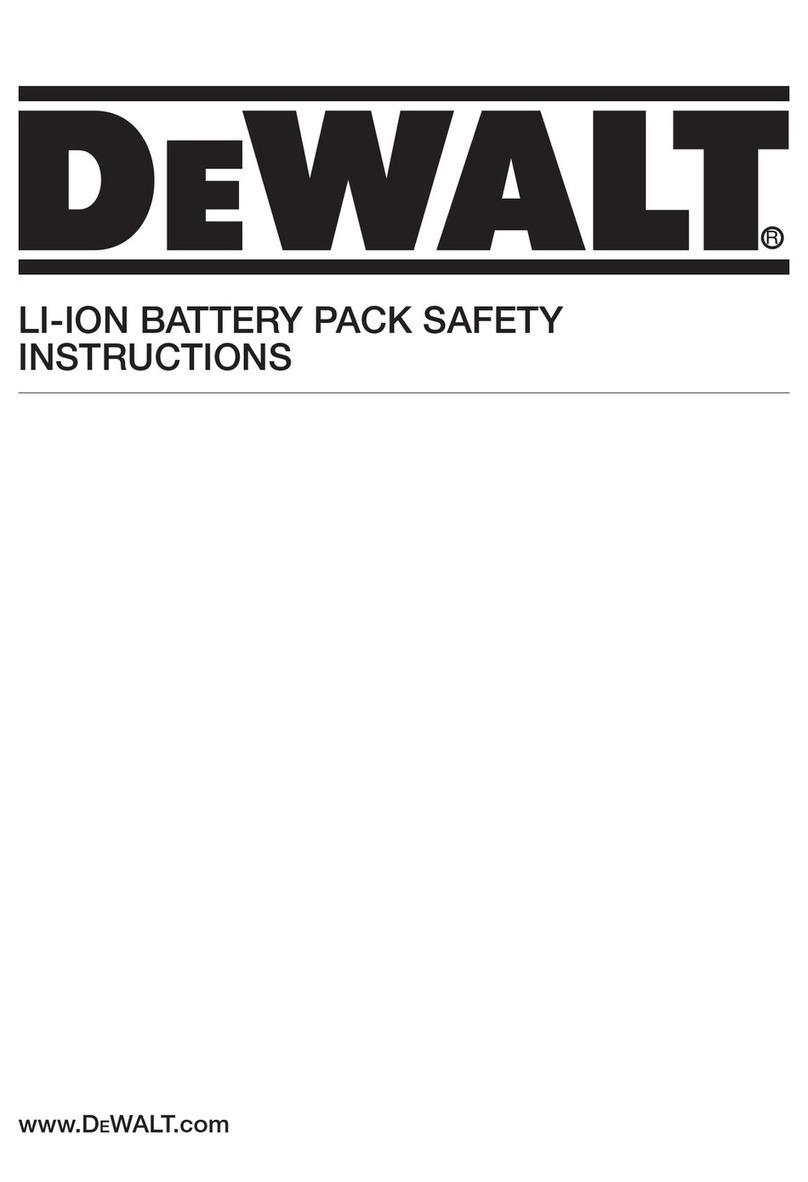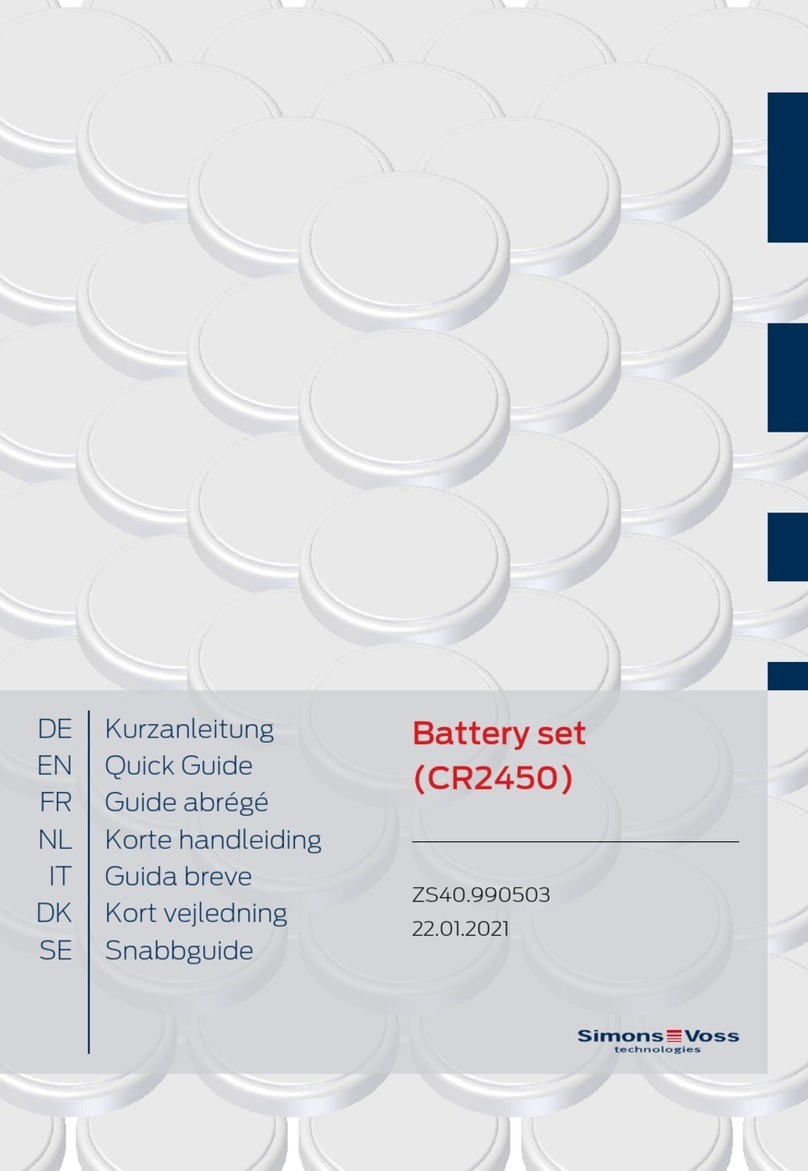
2
1. Receiving
Upon receipt of the shipment, check the contents against the packing slip and for
damage. Immediately inform EnerSys®of any missing or damaged items. EnerSys
is not responsible for shipment damage or shortages that the receiver does not
report to the carrier.
2. Storage
2.1. Storage Conditions and Time
If a battery cannot be installed immediately it should be stored in a clean, cool and
dry area. During storage cells/monoblocs lose capacity through self-discharge.
High temperatures increase the rate of self-discharge and reduce the storage life.
2.1.1. The maximum storage time before a refresh charge is required, and the
recommended OCV audit intervals are:
Temperature
(°C / °F)
Storage Time
(Months)
OCV Audit Interval
(Months)
+10 / +50 48 12
+15 / +59 34 12
+20 / +68 24 12
+25 / +77 17 6
+30 / +96 12 6
+35 / +95 8.5 3
+40 / +104 6 3
2.1.2. Cells/monoblocs must be given a refresh charge when the OCV approaches
the equivalent of 2.10 Volts per cell or when the maximum storage time is
reached, whichever occurs first.
2.2. Refresh Charge
Charge at a constant voltage equivalent to 2.29 - 2.40Vpc with a minimum 0.1C10
Amps available for a period of 24 hours.
2.3. Commissioning Charge
Before commencing operation, the battery must be given a commissioning
charge. The batteries should be charged using constant voltage with a minimum
charge current of 0.1C10 Amps with no load connected to the battery.
Either of the following methods can be used:
• Charge for 7 days at the recommended float voltage of 2.29Vpc at 20°C, or
• Charge for 24 hours at the recommended boost charge voltage of 2.40Vpc at
20°C.
Note: in the event that a routine discharge test will be performed following
commissioning, the battery should be charged in float mode for 24 hours
beforehand.
3. Battery Location
The battery compartment/room must have adequate ventilation to limit hydrogen
accumulation. Batteries must be installed in accordance with the IEC 62485-2
standard and any other local/national laws and regulations.
4. Installation
Products can be mounted in any orientation except inverted.
• 12V blocs: it is recommended that blocs are installed on their base. Please
consult your EnerSys representative about any other installation orientations.
• 2V cells: in cyclic applications the recommended orientation is horizontal.
In such configuration the instructions below must be complied with.
• Do not use terminal posts to lift or handle cells.
• Do not install the cells in such a way that the box-lid seal is resting on
a runner.
• Always ensure that the arrow on the lid of each cell is pointing in vertical
orientation.
Each cell/monobloc is supplied with terminal/connector fasteners.
The positive terminal is identified by a “+” symbol on each cell/monobloc. Install
the batteries in accordance with the instructions and/or layout drawing, taking care
to ensure correct terminal location and polarity.
Connect the monoblocs/cells with the connectors and fasteners provided. The
fastener torque value is indicated on the product label.
Place the insulating covers in position immediately after tightening the fasteners.
5. Operation
PowerSafe SBS XC+ cells and monoblocs are designed for a multitude of
operating modes. From controlled hybrid partial state of charge operation (PSoC)
to unreliable grid and renewable energy applications where, due to the demands
on the battery, there is a risk of uncontrolled partial state of charge operation.
The battery will give the best performance and service life when working at
a temperature of 20°C. The maximum operating temperature range is -40°C
to +50°C. Operation of valve regulated batteries at temperatures higher than
20°C will reduce life expectancy. Life is reduced by 50% for every 10°C rise in
temperature.
5.1. Standby / Float Operation
Constant voltage chargers are recommended. The charging voltage should be set
at the equivalent of 2.29Vpc at 20°C (68°F) or 2.27Vpc at 25°C (77°F).
The recommended float voltage temperature compensation is:
• 2.29Vpc +3mV per cell per °C below 20°C (68°F)
• 2.29Vpc -3mV per cell per °C above 20°C (68°F)
The charging voltage, at 46°C (115°F) and above, is 2.21Vpc.
Handling
PowerSafe SBS XC+batteries are supplied in a
charged condition and are capable of extremely
high short circuit currents. Take care to avoid short-
circuiting terminals of opposite polarity.
Important
Please read this manual immediately on receipt of the battery before unpacking and installing. Failure to comply with these instructions will render any warranties null
and void.
Care for your safety
Keep flames away
In case of accidental overcharge a flammable
gas can leak off the safety vent.
Discharge any possible static electricity from
clothes by touching an earth connected part.
Tools
Use tools with insulated handles. Do not place or drop
metal objects on the battery. Remove rings, wristwatch
and articles of clothing with metal parts that may come
into contact with the battery terminals.
No smoking,
no naked flames,
no sparks
Shield
eyes
Read
instructions
Electrical
hazard Danger
Recycle scrap
batteries.
Contains lead
Electrolyte is
corrosive
Clean all acid splash in eyes or on
skin with plenty of clean water.
Then seek medical help. Acid on
clothing is to be washed with
water
Warning: Risk of fire, explosion, or burns. Do not disassemble,
heat above 60°C (140°F), or incinerate. Metallic parts
under voltage are present on the battery, avoid short circuit.
Do not place tools or items on top of the battery.
California Proposition 65 Warning - Battery posts, terminals, and related accessories contain lead and lead compounds, chemicals known to the State of California to
cause cancer and reproductive harm. Wash hands after handling.
PowerSafe®SBS®XC+EN




